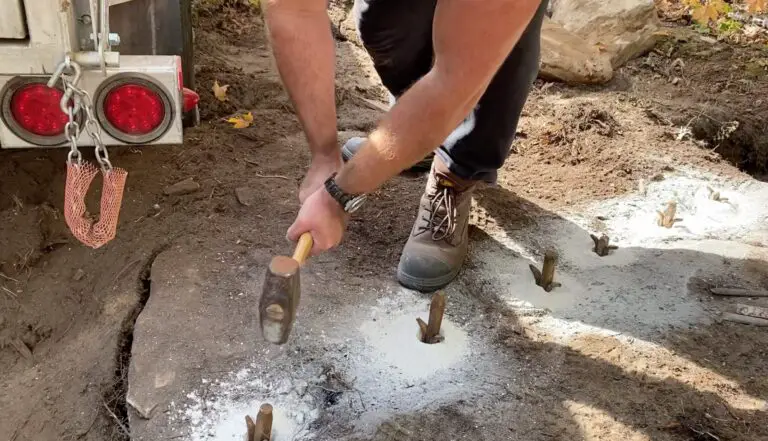
- Video Watch Time = 4 minutes
If you’re concerned about where our wood for projects and renovations come from, I’ve got some ideas you might like. It has to do with one of the unavoidable realities of the human condition – the need to wrestle with contradictions. The struggle goes on everywhere, though the details are different for each of us. One of my main, personal contradictions revolves around wood. I use more of it than most people – in my workshop, to heat my house, for my cedar rail fences, and lots more. But I also love the beauty of forests and trees, especially the old-growth giants. Even though I’ve experienced how ugly and depressing a clear-cut logging site can be during several summer’s work as a tree planter when I was in college, I still marvel at the possibilities contained in, say, a knot-free pine plank. Contradictions don’t make sense, but they remain and we have to deal with them.
Have Your Forest & Cut It, Too

Society wrestles with the forest vs. wood dilemma all the time. You see it when the forces of preservation square off against the chainsaws. Wherever you find trees, especially big ones, you’ll usually find people with very different ways of seeing them. I suspect that if people on both sides of the conflict were completely honest about it, neither could put forward a workable model of the world based only on their own views.
I’m careful to cut my own forest responsibly, and it grieves me when I see other small landowners abuse their forests and make a mess of them. But what about the wood products I buy? Much of the wood I use comes from sources that aren’t necessarily sustainably managed, and that bit of easily-ignored truth bothers me. I believe that true sustainability – especially if it leaves some wild lands untouched – probably comes as close to solving the forest dilemma as we’ll ever get, and wood certification can help with that.
What is Certified Wood?
I mustn’t be the only one feeling the pangs of a poorly-handled, forest-based contradiction, because global initiatives to help solve the challenge are part of the world scene, now. The Forest Stewardship Council (FSC) is an independent, international, not-for-profit organization that promotes sustainable forestry through certified harvesting practices. That’s what the FSC logo looks like below as you’ll see it on lumber.

The FSC offers a third party certification regime that monitors logging operations according to ten international principles and criteria. There’s also chain-of-custody tracking, transparency of management, protection of indigenous peoples’ rights and strict limits on the conversion of natural forest lands to agriculture.
Here’s how certification works:
- The FSC has developed guidelines for sound forestry practices based on balanced input from independent sources.
- The guidelines vary for different parts of the globe, of course, but the aim is universal: To put forth a method of using forests in a way that doesn’t kill the golden goose, while at the same time boosting local economies and preserving non-commercial forest values. It’s a tall order (because of the built in contradictions), but one that is being met right now.
- Wood producers can seek to have their operations certified through third-party inspection firms. Consumers can support this by the choices they make to buy FSC-certified products.
What are the Benefits of Certified Wood?
When businesses succeed in winning certification, there are distinct benefits. We inherit a more secure supply of high-quality wood products, based on the best, unbiased scientific management knowledge we have right now. Business reaps greater profits from the added value that certified wood products command, and we all enjoy a little more mystery and wonder in forests that still look like something nature created. In a world where levels of timbering have maxed-out in some areas, increases in corporate profitability can only come from adding more value to a steady stream of newly-cut logs. Certified wood is one way of adding this value for primary producers, as well as others. Progressive retail lumberyards, homebuilders, furniture makers and other secondary users can also boost themselves above the competition by using certified wood.
Where Can I Find Certified Wood?
Never seen a certified 2×4? That’s probably going to change as certified production streams become more common. You also need to look for the certification stamp. It’s easy to miss. Certification is also not just about lumber and sheet goods, either. Gibson Musical Instruments — the famous St. Louis, MO guitar maker — made a series of models called SmartWood, instruments crafted from certified tropical and temperate-zone woods.
The power to put more certified wood products on store shelves, and in lumber yards, ultimately comes down to us. We need to ask about the origin of the wood we’re buying, choose sources that balance the contradictions of life, then use that wood economically.
One of the most likely places you’ll find certified wood is in piles of construction-grade lumber. And believe it or not, 2x10s and 2x12s destined for house construction are often clear or nearly clear of knots, making them excellent for furniture projects, even refined ones. I’ve made beautiful, refined and finished projects out of construction-grade lumber, and this stuff is as cheap as wood gets. Learn how I do it in the video below. It comes from my online video course BUILD YOUR OWN CABINETS.












